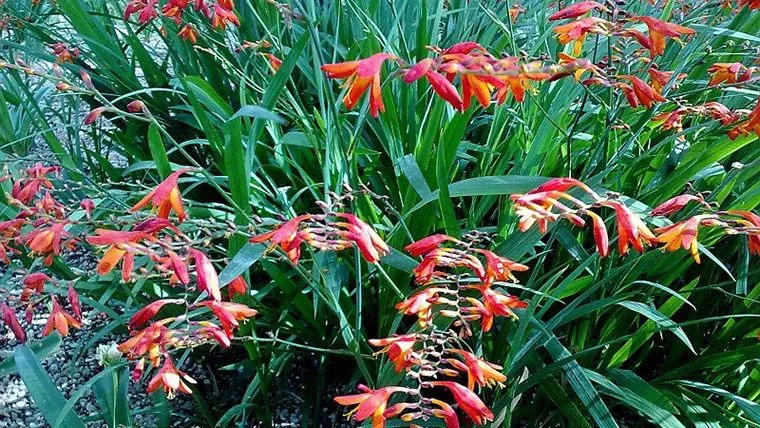Plant metabolites - that is, the substances generated by the metabolic processes of the plants - constitute a true mine for medicine: it is estimated that approximately half of the modern drugs derive from those compounds.For example, one of the most used medications against cancer is placlitaxel, which comes from the pacific shore cortex.
The different species of plants produce about 200,000 specialized metabolites, but it is not easy to identify them and obtain the necessary amount to produce therapeutic effects.
And that is the challenge of scientists discovered a promising substance against type 2 diabetes, a disease that suffers more than five million Spaniards and 320 million people worldwide.It is a metabolite produced a well -known garden plant, of the genus crocosmia, characterized by its fan -shaped leaves and its flowers of a living orange color.
lower glucose without side effects
But what is special this plant compound?One of the most used drugs to treat diabetes, both type 1 and type 2, are alpha-glycosidase inhibitors, which decrease the absorption of carbohydrates in the digestive system (and, consequently, levelsof blood glucose) after meals.The problem is that the inhibition of alpha-glucosidases-a type of enzymes-also produces unpleasant side effects: diarrhea, flatulence and abdominal pain.
Ten years ago, and after analyzing 30,000 extracts of plants and other organisms, the scientists finally gave a compound that had the same inhibitory effects without producing intestinal discomfort, and found it in the bulbs of the species Crocosmia × crocosmiiflora.
However, there was still a long way to go before it could be dispatched in pharmacies.Baptized as Montbretin A (MBA) - in the Anglo -Saxon world, crocosmia is known as Montbretia -, the metabolite of the ornamental plant cannot be produced in large quantities without knowing the very complex biochemical mechanisms and the genes involved in its biosynthesis.
Now, scientists at the University of British Columbia and the Canadian Glycomics Network Research Center have just announced in the specialized magazine The Plant Cell that they have found with the first three intermediary metabolites in the MBA biosynthesis, including a product called Mini-MBA, which they have in turn have associated with the activity of four enzymes.As the Canadian experts verified, the mini-bba also has the sought after inhibitor effect on the intestinal absorption of carbohydrates.In addition, and this is very important in view of their future industrial production, scientists have cloned the genes of these enzymes so that a wild tobacco plant man-miba itself.
More information: Montbretin to Biosynthesis.Sandra Irmisch, Seohyun Jo, Christopher R Roach, Sharon Jancsik, Macaire M.S.Yuen, Lina Madilao, Mark Mark O'Neil-Johnson, Russell Williams, Stephen G Withers, Joerg Bohlmann.Plant Cell, Jul.2018, DOI: Link



